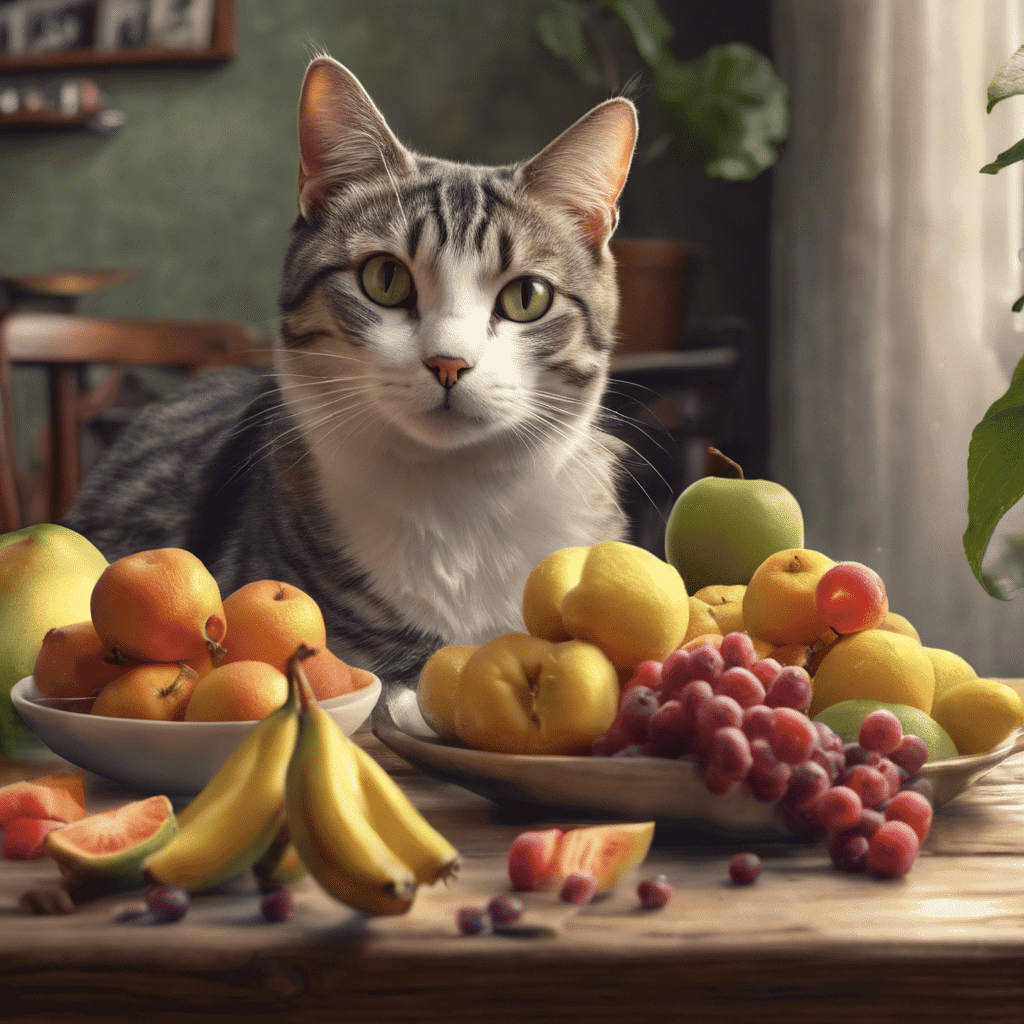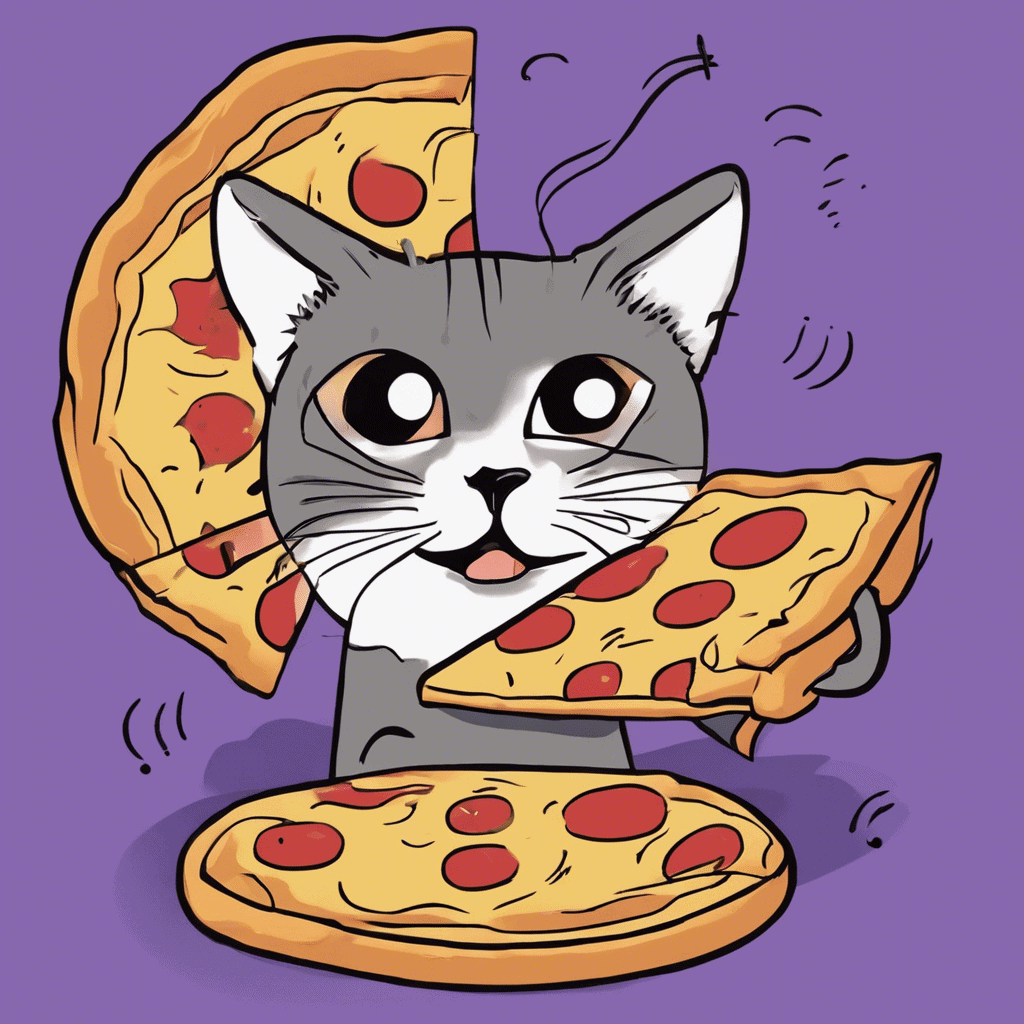As a cat owner, it’s important to understand what foods are safe and which ones are not. While cats are carnivores and require a diet high in protein, certain foods can be toxic to them and lead to serious health problems. Poisonous cat food can cause anything from gastrointestinal distress to organ failure, and in some cases, even death.
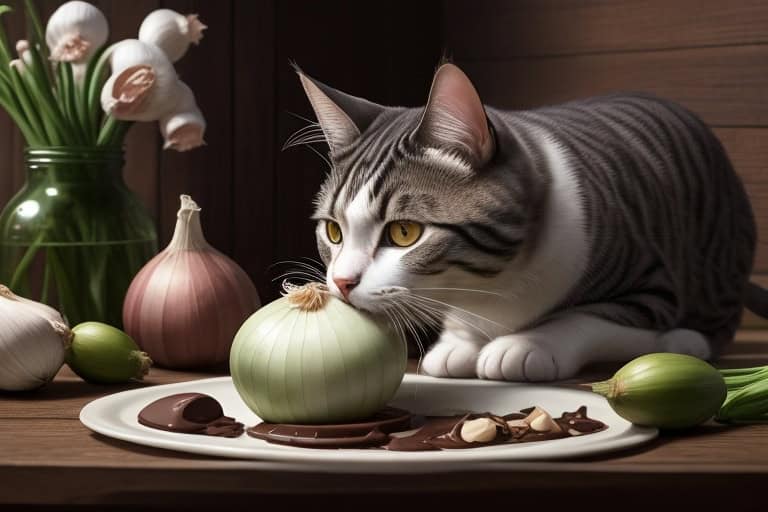
Identifying poisonous substances in cat food can be challenging, especially when it comes to commercial brands. Understanding cat food ingredients and reading labels can help you make informed decisions about what to feed your feline friend.
It’s also important to be aware of common human foods that are dangerous to cats, such as chocolate, onions, and garlic.
Key Points
| Poisonous cat food can cause serious health problems and even death. |
| Understanding cat food ingredients and identifying poisonous substances can help prevent exposure to toxic foods. |
| Familiarizing yourself with common human foods that are dangerous to cats is essential for keeping your feline friend safe. |
Understanding Cat Food Ingredients
When it comes to choosing cat food, it’s important to understand the ingredients listed on the packaging. Here are some common ingredients you may come across and what they mean:
Proteins
Cats are obligate carnivores, meaning they require a source of dietary protein to thrive. Protein is a crucial component of every cat’s diet, providing essential amino acids necessary for the growth and repair of body tissues, including muscles, organs, skin, hair, and nails. Look for high-quality animal-based proteins, such as chicken, turkey, beef, or fish, listed as the first ingredient on the packaging.
Carbohydrates
Carbohydrates are a source of energy for cats, but they are not an essential component of their diet. In fact, cats have a limited ability to digest carbohydrates and can develop health problems if they consume too many. Look for cat food that contains a small amount of high-quality carbohydrates, such as sweet potatoes, peas, or brown rice.
Fats
Fats are an important source of energy for cats and also help to maintain healthy skin and coat. Look for cat food that contains high-quality animal-based fats, such as chicken fat or fish oil, listed as the second or third ingredient on the packaging.
Fillers and Additives
Fillers and additives are often used in cat food to enhance flavor, texture, and shelf life. However, some fillers and additives can be harmful to cats and should be avoided. For example, avoid cat food that contains artificial preservatives, such as BHA and BHT, and avoid cat food that contains by-products or meat meal, which can be made from low-quality animal parts.
By understanding the ingredients listed on cat food packaging, you can make an informed decision about what to feed your cat. Always choose high-quality, nutritious cat food to ensure your cat stays healthy and happy.
Identifying Poisonous Substances
As a cat owner, it’s important to be aware of the common poisonous substances that your feline friend may come into contact with. Here are some tips on how to identify them:
Foods
There are many human foods that are toxic to cats. Some common ones include chocolate, caffeine, onions, garlic, grapes, and raisins. If your cat ingests any of these foods, they may experience symptoms such as vomiting, diarrhea, lethargy, and seizures. It’s important to keep these foods out of reach of your cat and to avoid feeding them any table scraps.
Household Items
There are many household items that can be poisonous to cats. These include cleaning products, insecticides, and certain plants. Some common plants that are toxic to cats include lilies, tulips, and philodendrons. If you suspect that your cat has ingested any of these items, it’s important to contact your veterinarian immediately.
Medications
Many human medications can be toxic to cats, even in small doses. Some common ones include aspirin, acetaminophen, and ibuprofen. If your cat ingests any of these medications, they may experience symptoms such as vomiting, diarrhea, and loss of appetite. It’s important to keep all medications out of reach of your cat and to only give them medication that has been prescribed by a veterinarian.
Chemicals
There are many chemicals that can be poisonous to cats, including antifreeze and rat poison. If your cat ingests any of these chemicals, they may experience symptoms such as vomiting, seizures, and coma. It’s important to keep these chemicals out of reach of your cat and to contact your veterinarian immediately if you suspect that your cat has ingested any of them.
By being aware of the common poisonous substances that your cat may come into contact with, you can help keep your feline friend safe and healthy. If you suspect that your cat has ingested any toxic substance, it’s important to contact your veterinarian immediately.
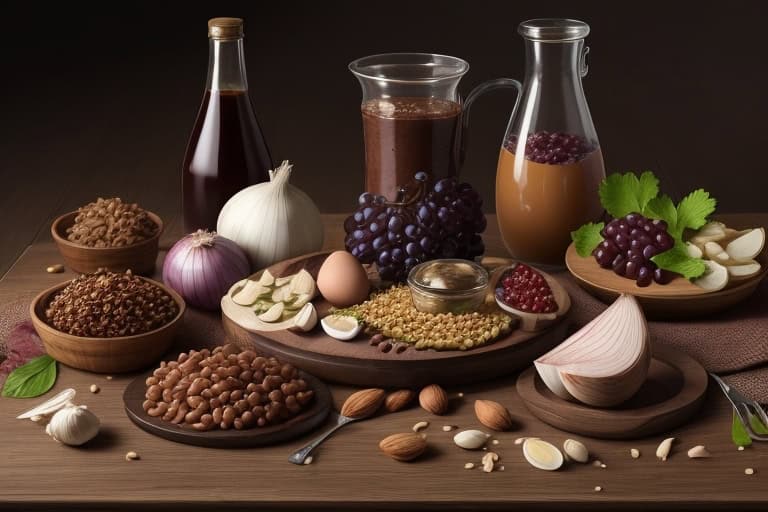
10 Foods That Are Poisonous to Cats
As a responsible cat owner, it is important to know which foods are safe for your furry friend to eat and which ones can be toxic. Here are ten foods that you should avoid feeding your cat:
| Hazardous Foods | Symptoms and Effects | Potential Dangers |
|---|---|---|
| Chocolate | Contains theobromine, toxic if ingested in large amounts. Symptoms include vomiting, diarrhea, tremors, seizures. | Contains theobromine, which can be toxic to cats if ingested in large amounts, leading to symptoms such as vomiting, diarrhea, tremors, and seizures |
| Onions, Garlic, Chives | Can damage red blood cells, leading to anemia. Symptoms may include lethargy, weakness, and pale gums. | Can cause damage to a cat’s red blood cells, leading to anemia, with symptoms including lethargy, weakness, and pale gums |
| Grapes and Raisins | Can cause kidney failure. Symptoms include vomiting, diarrhea, and lethargy. | Can cause kidney failure in cats, with symptoms including vomiting, diarrhea, and lethargy |
| Alcohol | Even small amounts can be dangerous, causing vomiting, diarrhea, difficulty breathing, coma, or death. | Even small amounts can be dangerous for cats, causing vomiting, diarrhea, difficulty breathing, and even coma or death |
| Raw Meat and Eggs | May contain harmful bacteria like Salmonella and E. coli, causing vomiting, diarrhea, and gastrointestinal issues. | Can contain harmful bacteria such as Salmonella and E. coli, leading to vomiting, diarrhea, and other gastrointestinal issues |
| Fish | Raw fish, especially salmon, can contain a parasite leading to salmon poisoning disease. Symptoms include vomiting, diarrhea, fever. | Raw fish, particularly salmon, can contain a parasite called Neorickettsia helminthoeca, causing salmon poisoning disease in cats, with symptoms including vomiting, diarrhea, and fever |
| Milk and Dairy Products | Cats are lactose intolerant; excessive consumption can cause digestive issues like diarrhea. | Cats are lactose intolerant and can develop digestive issues such as diarrhea if they consume too much milk or other dairy products |
| Caffeine | Causes restlessness, rapid breathing, heart palpitations, muscle tremors, and can lead to death. | Can cause restlessness, rapid breathing, heart palpitations, muscle tremors, and even death in cats |
| Nuts | Macadamia nuts and walnuts can be toxic, causing vomiting, diarrhea, lethargy, and potential intestinal blockages. | Macadamia nuts and walnuts can be toxic to cats, causing vomiting, diarrhea, and lethargy, and can also cause intestinal blockages if ingested whole |
| Xylitol | Found in sugar-free gum and candy; can cause insulin release, leading to hypoglycemia, seizures, and liver failure. | This artificial sweetener can cause insulin release, leading to hypoglycemia, seizures, and liver failure in cats |
Remember, if you suspect that your cat has ingested any of these foods, contact your veterinarian immediately.
Effects of Poisonous Cat Food
Feeding your cat with poisonous food can have severe consequences on their health. Here are some of the effects of feeding your cat with poisonous food:
- Gastrointestinal Problems: Poisonous cat food can cause gastrointestinal problems such as vomiting, diarrhea, and lack of appetite. These symptoms can be mild or severe depending on the type and amount of poisonous food your cat has ingested.
- Anemia: Certain human foods such as onions, garlic, and chocolate contain substances that can cause the destruction of red blood cells in cats. This can lead to anemia, a condition where the body does not have enough red blood cells to carry oxygen to the tissues.
- Muscle Tremors: Caffeine-containing foods and drinks such as coffee, tea, and chocolate can cause muscle tremors in cats. These tremors can be mild or severe and can affect the cat’s ability to walk or stand.
- Heart Problems: Some poisonous cat foods can cause heart problems such as rapid breathing, heart palpitations, and irregular heartbeat. These symptoms can be life-threatening and require immediate veterinary attention.
- Neurological Problems: Poisonous cat food can also cause neurological problems such as incoordination, seizures, and coma. These symptoms can be mild or severe depending on the type and amount of poisonous food your cat has ingested.
If you suspect that your cat has ingested poisonous food, it is important to seek veterinary attention immediately. Prompt treatment can help prevent serious health complications and save your cat’s life.
Preventing Exposure to Poisonous Cat Food
As a responsible cat owner, it is important to take precautions to prevent your cat from being exposed to poisonous foods. Here are some tips to help you keep your cat safe:
| Advisory Information |
|---|
| Be aware of the foods that are toxic to cats: Some common foods include chocolate, caffeine, onions, garlic, grapes, and raisins. Avoid feeding these to your cat, and keep them out of reach. |
| Read labels carefully: When purchasing cat food or treats, read labels to ensure they contain no toxic ingredients. Look for foods formulated for cats without harmful additives. |
| Keep human food out of reach: Store all human food securely where your cat can’t access it, including food left on counters or tables. |
| Don’t give in to begging: Stick to a regular feeding schedule, avoiding table scraps or other human food that can be dangerous for cats. |
| Store food properly: Ensure cat food and treats are stored securely, using sealed containers and placing them in locations out of your cat’s reach. |
By following these simple tips, you can help keep your cat safe from exposure to poisonous foods. If you suspect that your cat has ingested something toxic, seek veterinary care immediately.
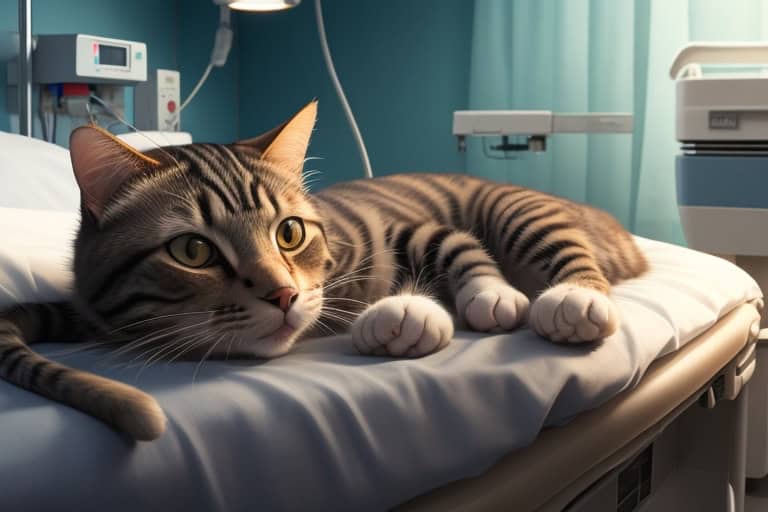
Veterinary Intervention and Treatment
If you suspect your cat has ingested a poisonous substance, it is important to seek veterinary intervention immediately. Delaying treatment can lead to severe complications and even death.
Upon arrival at the veterinary clinic, the veterinarian will perform a physical examination and may recommend diagnostic tests such as blood work, urinalysis, and imaging to determine the extent of the poisoning. The treatment plan will depend on the type of poison ingested, the severity of the symptoms, and the overall health of the cat.
Here are some common treatments that may be recommended:
- Decontamination: The veterinarian may induce vomiting or administer activated charcoal to help absorb the toxins and prevent further absorption into the bloodstream.
- Supportive care: This may include intravenous fluids, oxygen therapy, and medications to control symptoms such as seizures, vomiting, and diarrhea.
- Specific antidotes: In some cases, there may be specific antidotes available to counteract the effects of the poison. For example, if the cat has ingested rat poison, vitamin K may be administered to help reverse the effects.
- Hospitalization: Depending on the severity of the poisoning, the cat may need to be hospitalized for several days to receive intensive care and monitoring.
It is important to follow the veterinarian’s instructions carefully and provide any necessary follow-up care at home. Some cats may require ongoing treatment and monitoring to ensure a full recovery.
Industry Regulations on Cat Food Safety
When it comes to cat food safety, there are several regulations in place to ensure that the food your cat eats is safe and healthy. These regulations are enforced by various government agencies and industry organizations. Here are some of the key regulations you should be aware of:
FDA Regulations
The U.S. Food and Drug Administration (FDA) regulates all animal foods, including cat food. The Federal Food, Drug, and Cosmetic Act (FD&C Act) requires that all animal foods be safe to eat, produced under sanitary conditions, contain no harmful substances, and be properly labeled. The FDA also has regulations in place for pet food labeling, which requires manufacturers to list all ingredients and nutritional information on the label.
AAFCO Standards
The Association of American Feed Control Officials (AAFCO) is a non-profit organization that sets standards for pet food and animal feed. AAFCO provides guidelines for pet food manufacturers to follow, including guidelines for ingredient definitions, nutrient levels, and labeling requirements. These guidelines are not legally binding, but many pet food manufacturers choose to follow them to ensure that their products meet industry standards.
Good Manufacturing Practices
In addition to FDA and AAFCO regulations, many pet food manufacturers have adopted Good Manufacturing Practices (GMPs) to ensure the safety and quality of their products. GMPs are a set of guidelines for manufacturing processes that help ensure consistency and quality in the final product. Some of the key components of GMPs include:
- Proper sanitation and hygiene practices
- Quality control procedures
- Employee training programs
- Proper storage and handling of ingredients and finished products
By following these regulations and guidelines, pet food manufacturers can help ensure that their products are safe and healthy for your cat to eat. However, it’s important to remember that no regulation or guideline can guarantee 100% safety. As a responsible pet owner, it’s up to you to monitor your cat’s health and behavior and choose a cat food that meets their nutritional needs and preferences.
Consumer Awareness and Advocacy
As a cat owner, it is important to be aware of the potential dangers of certain types of cat food. While most cat food brands are safe and nutritious, there are some that may contain harmful ingredients that can lead to serious health problems.
One way to stay informed about the safety of cat food is to follow consumer advocacy groups that specialize in pet food safety.
For example, Poisoned Pets is an independent, online journal that provides news and information about pet food safety. They do not accept advertising, corporate or government funding, or participate in commercial sponsorships or endorsements, making their information unbiased and reliable.
Another way to advocate for pet food safety is to demand better from pet food manufacturers.
The Clean Label Project is a nonprofit organization that works to promote transparency and safety in consumer products, including pet food. They provide a list of certified brands and products that have voluntarily and proactively taken steps to ensure food and consumer product safety.
In addition to following consumer advocacy groups and demanding better from manufacturers, it is important to be aware of common pet poisons and take steps to protect your cat. Some foods that are safe for humans can be toxic to cats, such as chocolate, onions, and garlic.
It is important to keep these foods out of reach of your cat and to contact a veterinarian immediately if you suspect your cat has ingested something toxic.
Overall, by staying informed and advocating for pet food safety, you can help protect your cat from potential harm and ensure that they receive the best nutrition possible.
Final Thoughts
In conclusion, it is important to be aware of the potential dangers of feeding your cat human food. Many common human foods can be toxic to cats and can cause serious health problems or even death. Some of the most dangerous foods for cats include chocolate, caffeine, alcohol, onions, garlic, and grapes/raisins.
If you want to give your cat a treat, it is best to stick to cat-specific treats or foods. You can also offer your cat small amounts of cooked meat or fish, but make sure to remove any bones and avoid seasoning or spices. Additionally, it is important to always keep human food out of your cat’s reach and to properly dispose of any food waste.
If you suspect that your cat has ingested something toxic, it is important to seek veterinary care immediately. The earlier the treatment, the better the chances of a full recovery. Signs of poisoning in cats can include vomiting, diarrhea, lethargy, loss of appetite, seizures, and difficulty breathing.
By being aware of the potential dangers and taking steps to prevent your cat from accessing toxic foods, you can help keep your feline friend safe and healthy.
FAQ
Can cats be poisoned by their food?
Yes, cats can be poisoned by their food. Certain ingredients commonly found in cat food can be toxic to cats, causing a range of symptoms from mild digestive upset to severe illness or even death.
What are some common toxic ingredients in cat food?
Some common toxic ingredients in cat food include onions, garlic, chocolate, caffeine, alcohol, grapes and raisins, and certain types of fish. Additionally, some cats may be allergic to certain proteins or grains commonly found in commercial cat food.
How can I tell if my cat’s food is safe?
Read the ingredient list on your cat’s food carefully, and avoid any foods that contain toxic ingredients or allergens. Look for foods that are made with high-quality, whole-food ingredients and are free from artificial colors, flavors, and preservatives.
What should I do if I suspect my cat has eaten poisonous food?
If you suspect your cat has eaten poisonous food, contact your veterinarian immediately. Symptoms of poisoning may include vomiting, diarrhea, lethargy, loss of appetite, and difficulty breathing. Your veterinarian can provide emergency treatment to help your cat recover.
Are there any safe and healthy alternatives to commercial cat food?
Yes, there are many safe and healthy alternatives to commercial cat food, including homemade cat food, raw food diets, and high-quality, natural cat food brands. However, it is important to consult with your veterinarian before making any changes to your cat’s diet.
What steps can I take to prevent my cat from eating toxic food?
To prevent your cat from eating toxic food, keep all human food and toxic substances out of reach of your cat. Store cat food in a secure location and only feed your cat high-quality, safe, and healthy cat food. Additionally, be sure to supervise your cat during meal times and monitor their behavior for any signs of illness or discomfort.

In her previous life, Lisa traveled extensively, both for work and leisure. After the pandemic struck, Lisa locked up her luggage and adopted a cat ever since.
Lisa is now an avid cat lover, she devotes most of her free time serving as butler to her adorable feline at home. When she is not with her cat, she can be seen using her phone sourcing for the latest cat supplies online.

